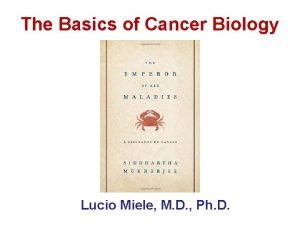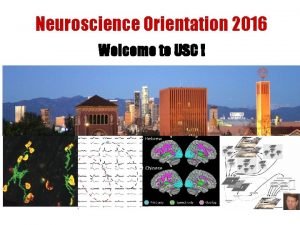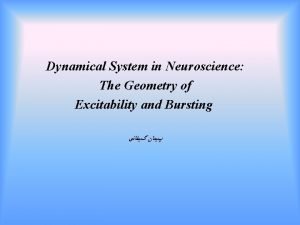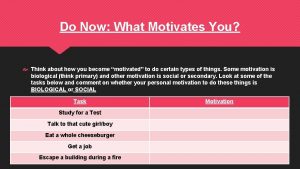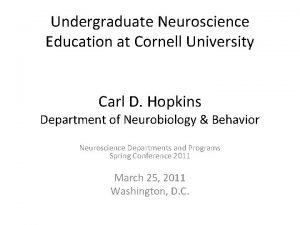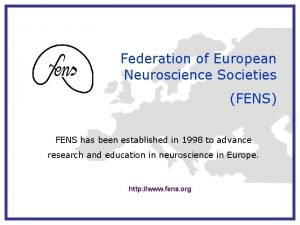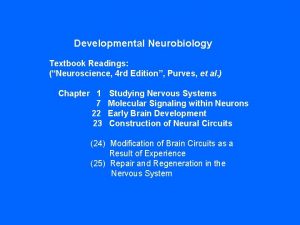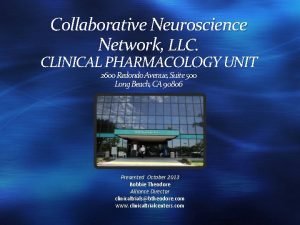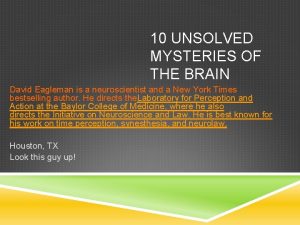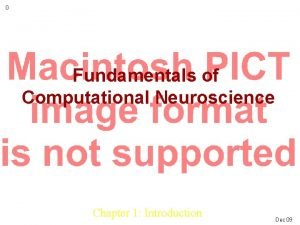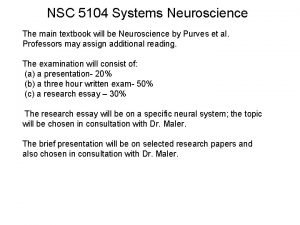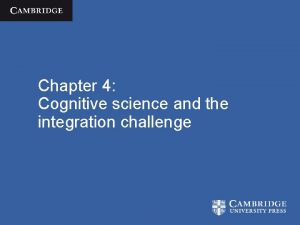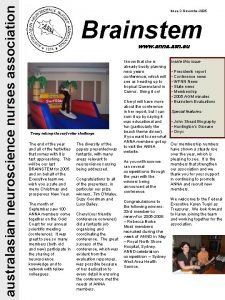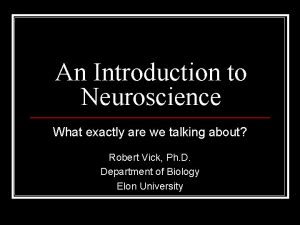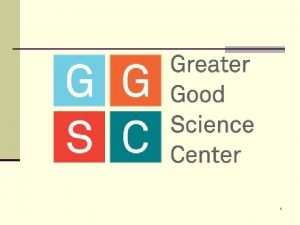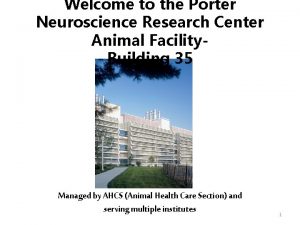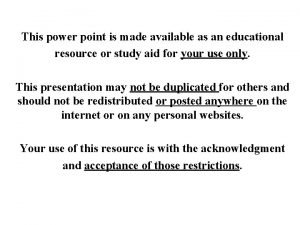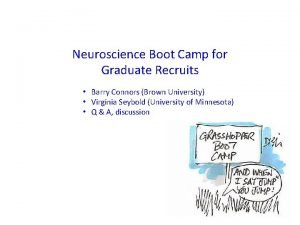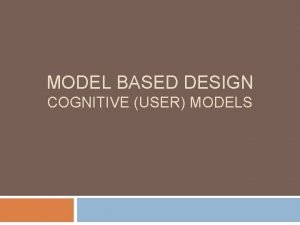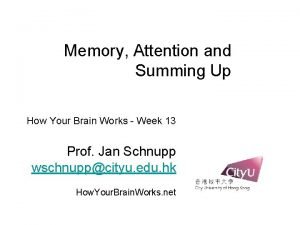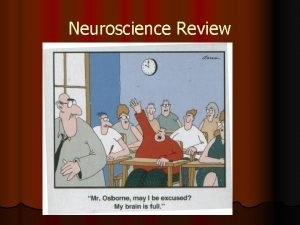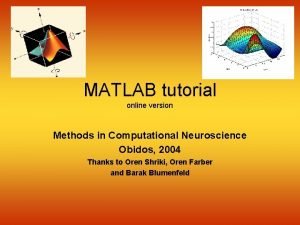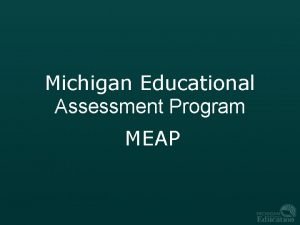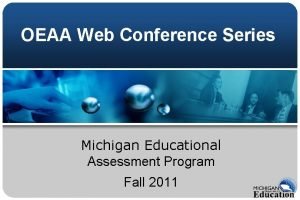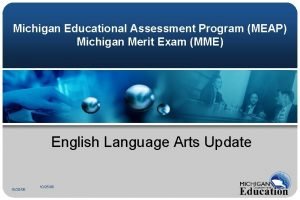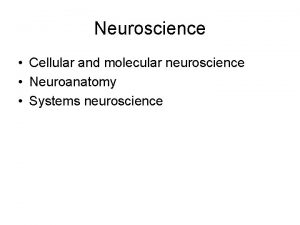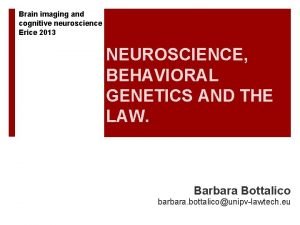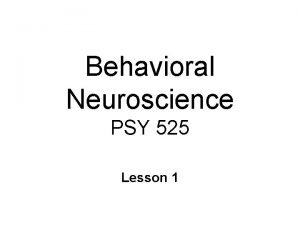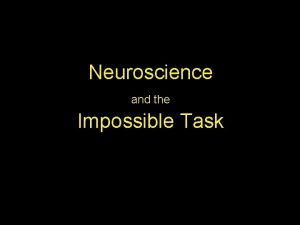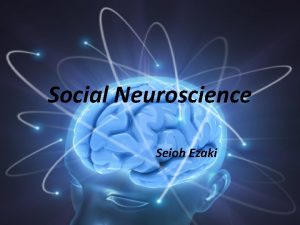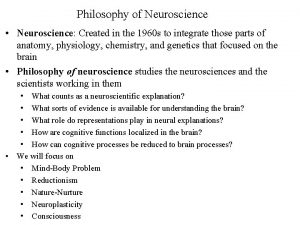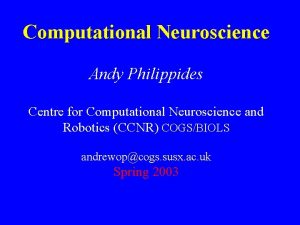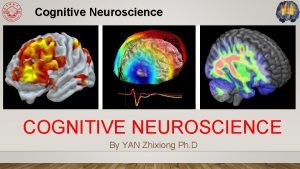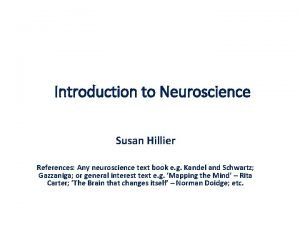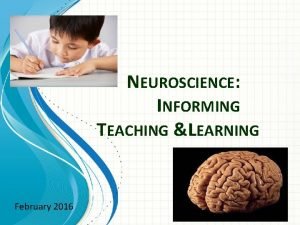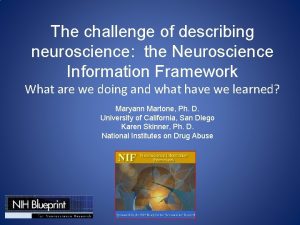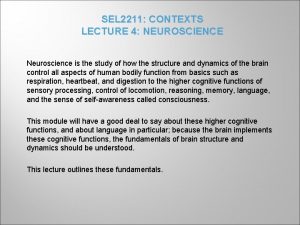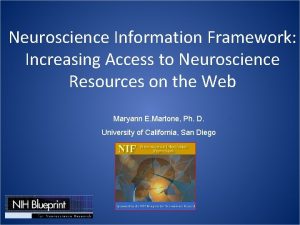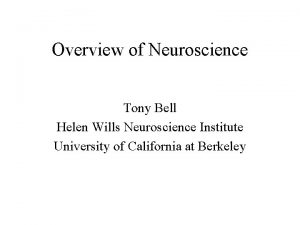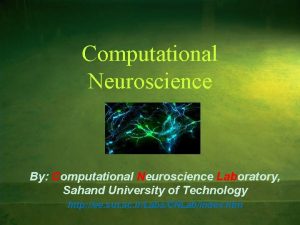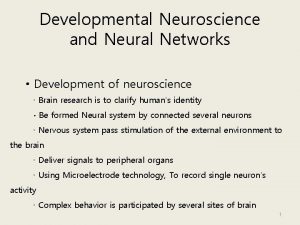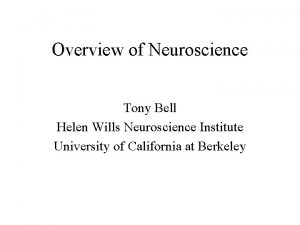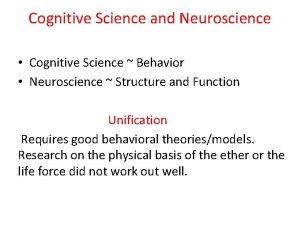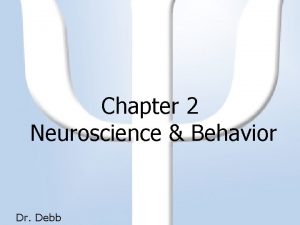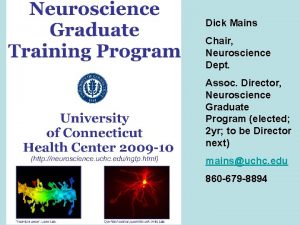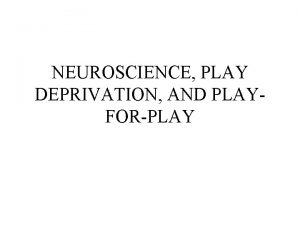Educational Neuroscience Program Educational Neuroscience Educational Neuroscience Program






























- Slides: 30


Educational Neuroscience Program Educational Neuroscience

Educational Neuroscience Program Advancing knowledge through developmental brain research Educational Neuroscience

Educational Neuroscience Program Advancing knowledge through developmental brain research Educational Neuroscience Support parents and affected individuals Guides practical interventions (see Newsletter) Outreach to educators, therapists

Educational Neuroscience Program Advancing knowledge through developmental brain research Empower kids by learning about the brain: Frontiers for Young Minds Educational Neuroscience Support parents and affected individuals Guides practical interventions (see Newsletter) Outreach to educators, therapists

Empowering kids


What is Frontiers for Young Minds? Open-access, non-profit, scientific journal written for – and reviewed by – kids ages 8 -15 ü Free to publish ü Free to read ü Free to distribute

Who is involved? • Young People (ages 8 -15) serve as Young reviewers • Schools and teachers can host Young Minds reviews in their classrooms • Young researchers serve as Science Mentors to our young reviewers • Expert researchers serve as authors or members of board to identify articles and reach into new disciplines

Editorial Board – Chief Editors Field Chief Editor Specialty Chief Editors Robert Knight University of California, Berkeley, USA Sabine Kastner Princeton University, USA Shane Larson Northwestern University, USA Daniel Kammen University of California, Berkeley, USA Understanding Neuroscience Understanding Astronomy and Space Science Understanding Earth and its Resources Fulvio D’Acquisto Queen Mary University of London, UK Pasquale Maffia University of Glasgow, UK Chelsea Specht Cornell University, USA Jeremy Martin University of Kansas, USA Understanding Health Understanding Biodiversity Understanding Mathematics Mark Brandon The Open University, UK Understanding Earth and its Resources Idan Segev Hebrew University of Jerusalem, Israel

Science Mentors • Researchers with experience in peer review or outreach • Encourage Young Reviewers to provide an honest and constructive review • Introduce life as a scientist • Introduce the basics of science publishing

How does it work?

1 Identification of recent discoveries, or concepts, that may be interesting for target audience. • Our Editorial Board identifies publications of interest • Scientists volunteer directly • Our partner organizations identify publications of interest through our - Recommendation Portal

2 Scientists behind the original article, or established in the field, write an article for 8 to 15 year olds.

2 Scientists behind the original article, or established in the field, write an article for 8 to 15 year olds. New Discovery Core Concept

Communicating your research • How to fit into 2, 000 words and not become too dense • Not everything will fit into a single article • What background will the reader need to really understand what background do they already have? • What vocabulary do they know? (Carver, 1994) (Hseuh-chao & Nation, 2000) (Kintsch & Rawson, 2005)

Desire to communicate their findings -vs. Fear of their findings being taken out of context

3 The article is reviewed by a Science Mentor and a Young Mind, or group of Young Minds. • Individually • After school/Outreach groups • Classroom • Live Review Event

4 Once the review process is completed, the article is validated by the Associate Editor. • Quality Control done by working researchers. • Making a resource of quality science, communicated directly to the general public, by the scientists conducting the research.

5 The finished article is published and made freely available on our website, alongside the reviewers’ names.

Every Article Gets a Cartoon!




Forty-two or two-and-forty – Learning maths in different languages

6 Educators from all around the world are free to create activities with their kids and teens based on the articles published

Where to go from here? We are striving to become an international multilingual journal reaching young minds globally. To do so, we are now working on the translations of published articles to be made available on our website, accessible to all. • Hebrew: rolling out soon • • Spanish: 2018 More languages to come

28 PUBLISHED ARTICLES cumulative 154 EDITORS cumulative Associate Editors Science Mentors 199 36 15 2013 167 84 54 AREAS COVERED: 2014 2015 2016 2017 43160 173 ARTICLE VIEWS X 1000 cumulative 65 14 15 1 2013 5 2014 48 27 23 33 2015 2016 538, 6 392, 9 57 2017 43160 LAUNCH 2013 1, 0 1, 4 2015 6 167 406 266 23 SECTIONS ARTICLES AUTHORS EDITORS COUNTRIES 65, 9 2016 2017 43160 ~1000 YOUNG MINDS Astronomy and Space Science Biodiversity Earth and its Resources Health Mathematics Neuroscience

Ways to get involved! 1. Write a Young Minds version of one of your published articles 2. Pair up with Young Mind(s) and become a Science Mentor 3. Download and disseminate Young Minds articles

kids. frontiersin. org kids@frontiersin. org @Front. Young. Minds Supporters and Collaborations:
 Nature neuroscience
Nature neuroscience Neuroscience major usc
Neuroscience major usc Dynamical systems neuroscience
Dynamical systems neuroscience Labelling feelings
Labelling feelings Cornell nbb
Cornell nbb Federation of european neuroscience societies
Federation of european neuroscience societies Developmental neuroscience textbook
Developmental neuroscience textbook Nuclei della base
Nuclei della base Collaborative neuroscience research llc
Collaborative neuroscience research llc Unsolved problems in neuroscience
Unsolved problems in neuroscience Fundamentals of computational neuroscience
Fundamentals of computational neuroscience Clep ucf
Clep ucf Systems neuroscience textbook
Systems neuroscience textbook Journal of neuroscience methods
Journal of neuroscience methods Neuroscience example
Neuroscience example Australian neuroscience nurses association
Australian neuroscience nurses association Neuroscience example
Neuroscience example Neuroscience psychology
Neuroscience psychology Porter neuroscience research center
Porter neuroscience research center Purves neuroscience
Purves neuroscience Neuroscience bootcamp
Neuroscience bootcamp An introduction to model-based cognitive neuroscience
An introduction to model-based cognitive neuroscience Halle berry neuron
Halle berry neuron Jelle bruineberg
Jelle bruineberg A few research
A few research Matlab
Matlab Uw madison neuroscience
Uw madison neuroscience Oeaa secure site
Oeaa secure site Michigan educational assessment program
Michigan educational assessment program Michigan educational assessment program
Michigan educational assessment program Differences between sequential and event-driven programming
Differences between sequential and event-driven programming
